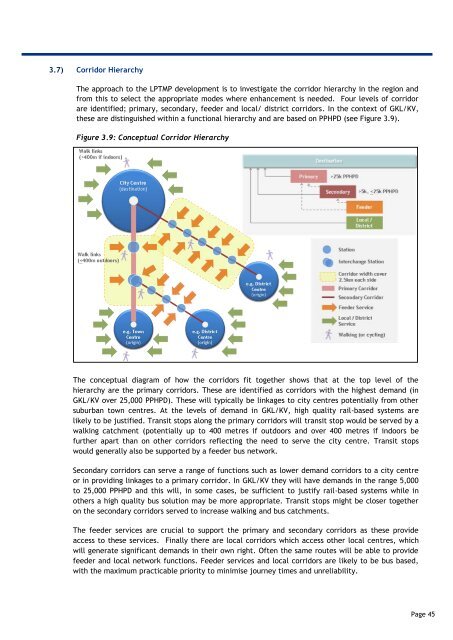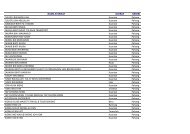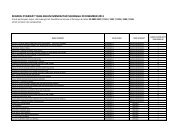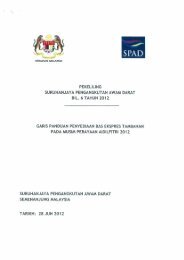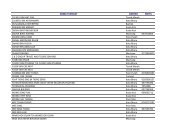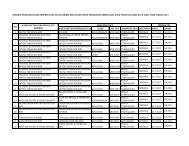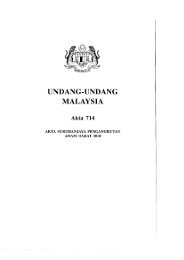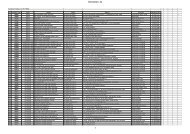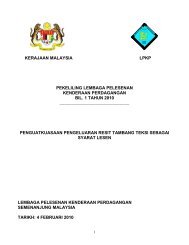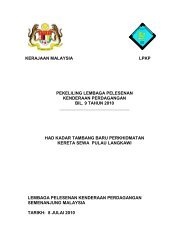Contents - SPAD
Contents - SPAD
Contents - SPAD
You also want an ePaper? Increase the reach of your titles
YUMPU automatically turns print PDFs into web optimized ePapers that Google loves.
3.7) Corridor Hierarchy<br />
The approach to the LPTMP development is to investigate the corridor hierarchy in the region and<br />
from this to select the appropriate modes where enhancement is needed. Four levels of corridor<br />
are identified; primary, secondary, feeder and local/ district corridors. In the context of GKL/KV,<br />
these are distinguished within a functional hierarchy and are based on PPHPD (see Figure 3.9).<br />
Figure 3.9: Conceptual Corridor Hierarchy<br />
The conceptual diagram of how the corridors fit together shows that at the top level of the<br />
hierarchy are the primary corridors. These are identified as corridors with the highest demand (in<br />
GKL/KV over 25,000 PPHPD). These will typically be linkages to city centres potentially from other<br />
suburban town centres. At the levels of demand in GKL/KV, high quality rail-based systems are<br />
likely to be justified. Transit stops along the primary corridors will transit stop would be served by a<br />
walking catchment (potentially up to 400 metres if outdoors and over 400 metres if indoors be<br />
further apart than on other corridors reflecting the need to serve the city centre. Transit stops<br />
would generally also be supported by a feeder bus network.<br />
Secondary corridors can serve a range of functions such as lower demand corridors to a city centre<br />
or in providing linkages to a primary corridor. In GKL/KV they will have demands in the range 5,000<br />
to 25,000 PPHPD and this will, in some cases, be sufficient to justify rail-based systems while in<br />
others a high quality bus solution may be more appropriate. Transit stops might be closer together<br />
on the secondary corridors served to increase walking and bus catchments.<br />
The feeder services are crucial to support the primary and secondary corridors as these provide<br />
access to these services. Finally there are local corridors which access other local centres, which<br />
will generate significant demands in their own right. Often the same routes will be able to provide<br />
feeder and local network functions. Feeder services and local corridors are likely to be bus based,<br />
with the maximum practicable priority to minimise journey times and unreliability.<br />
Page 45


